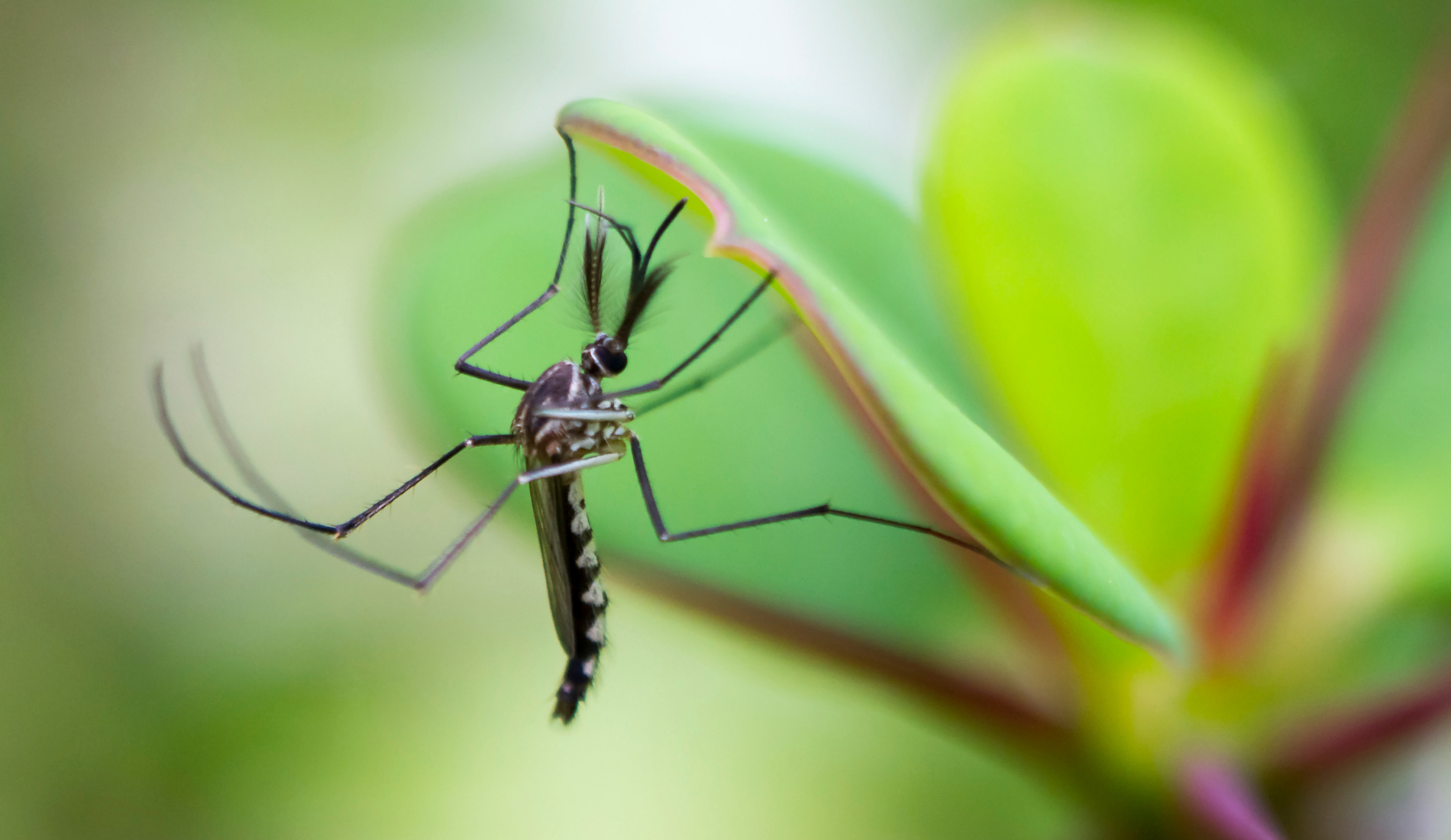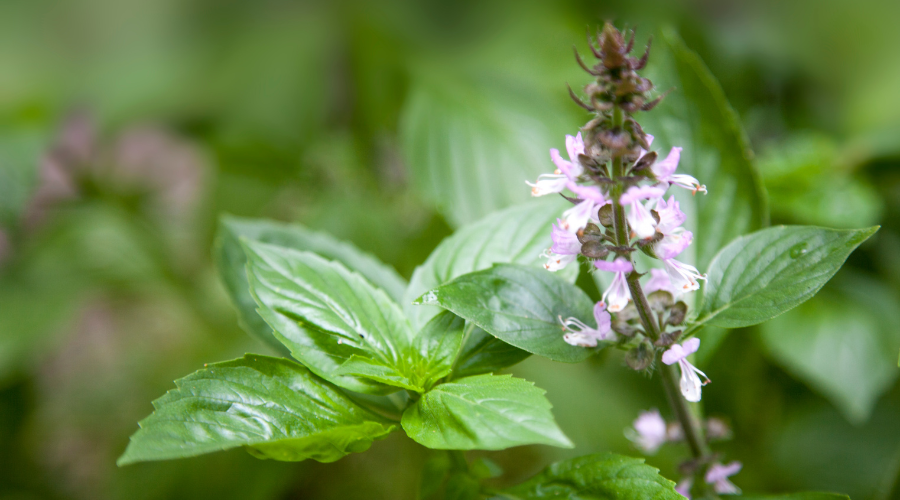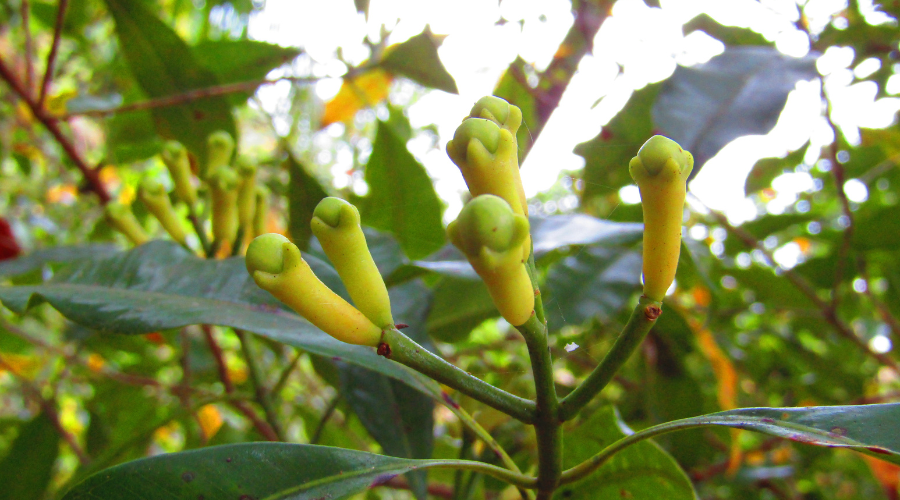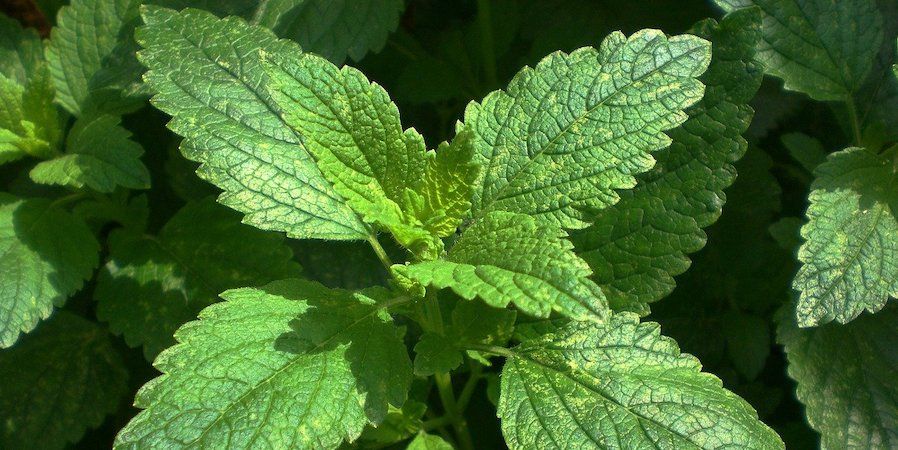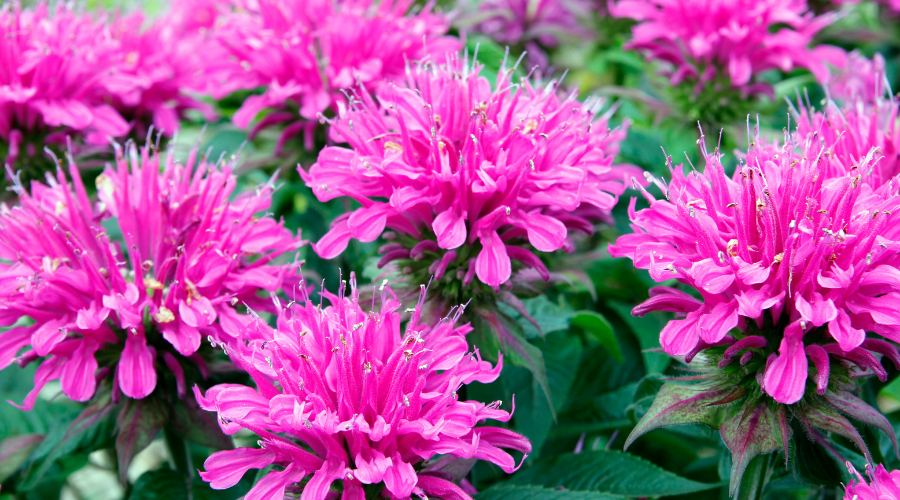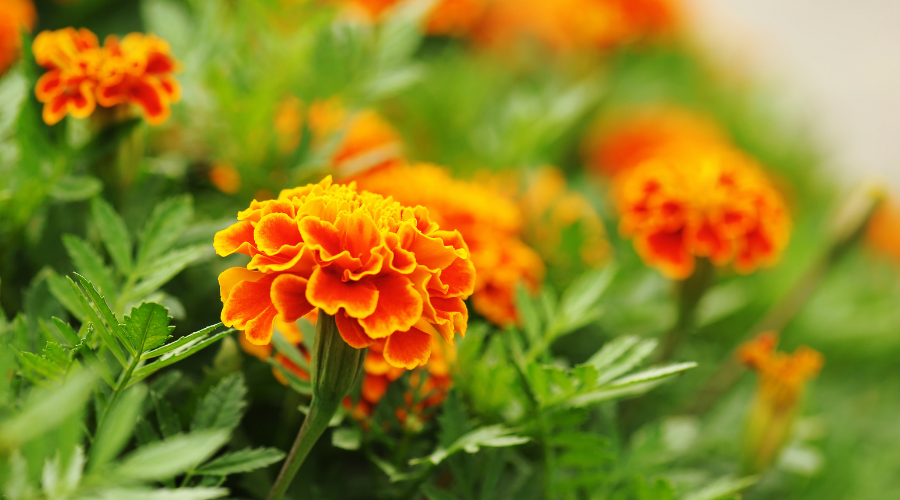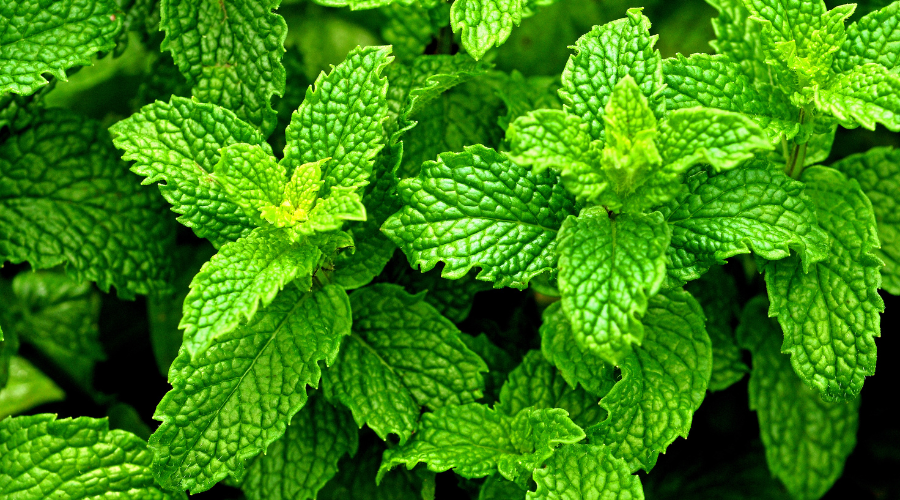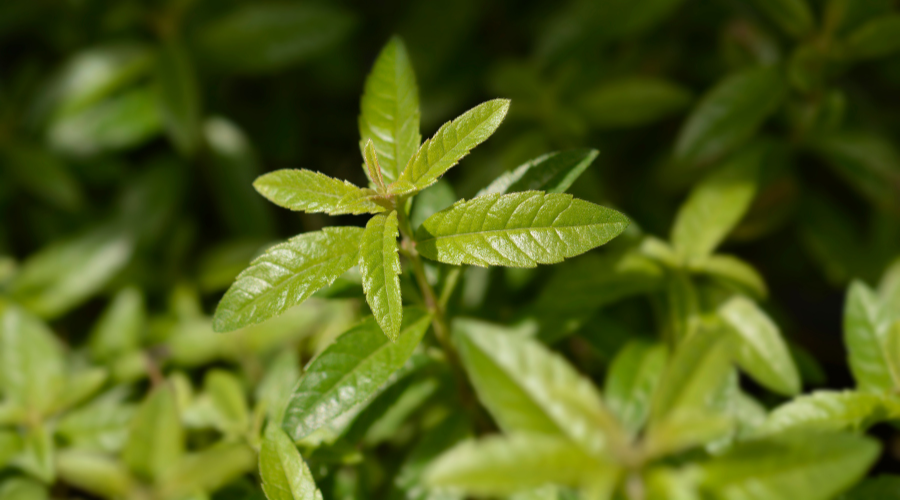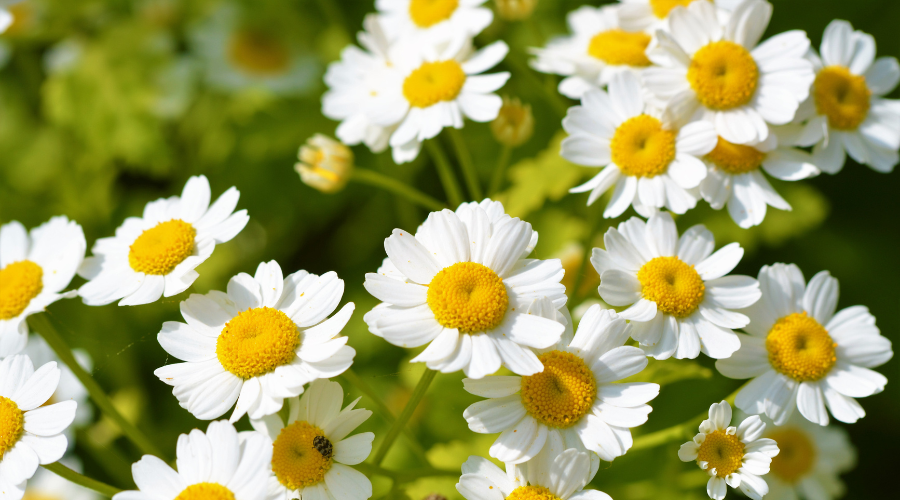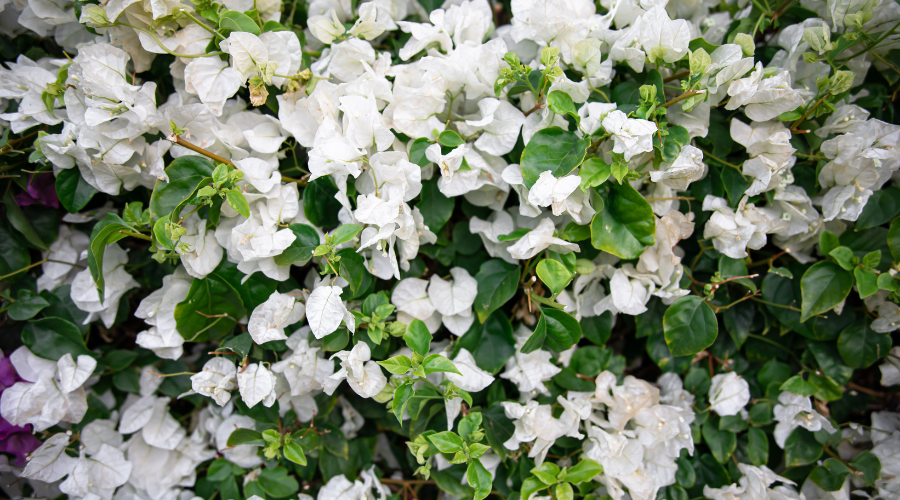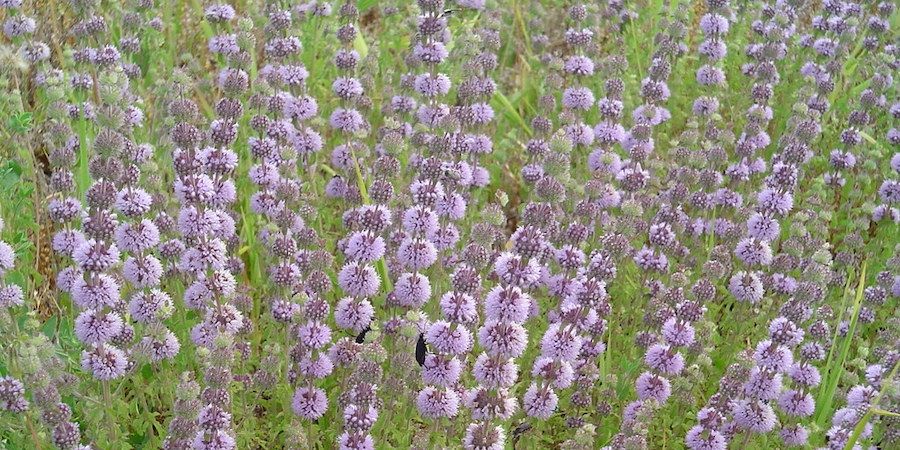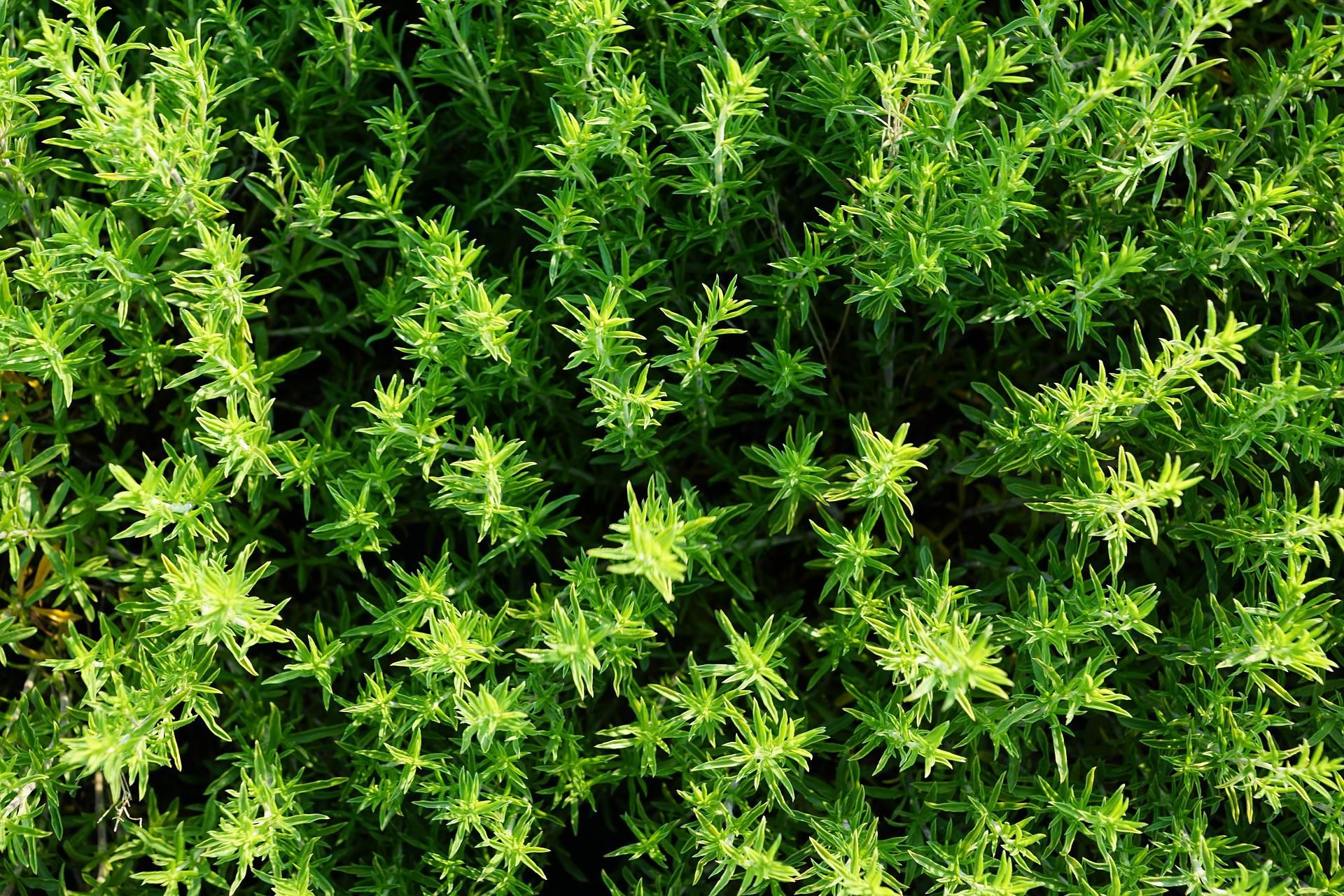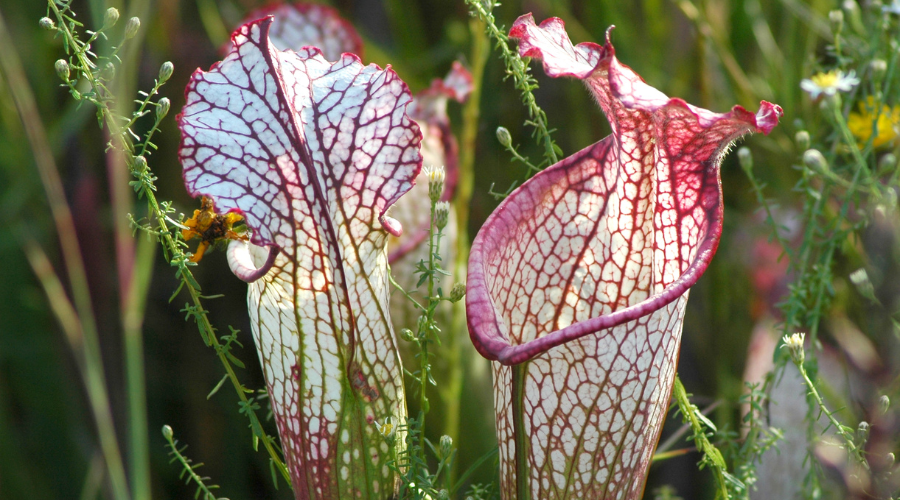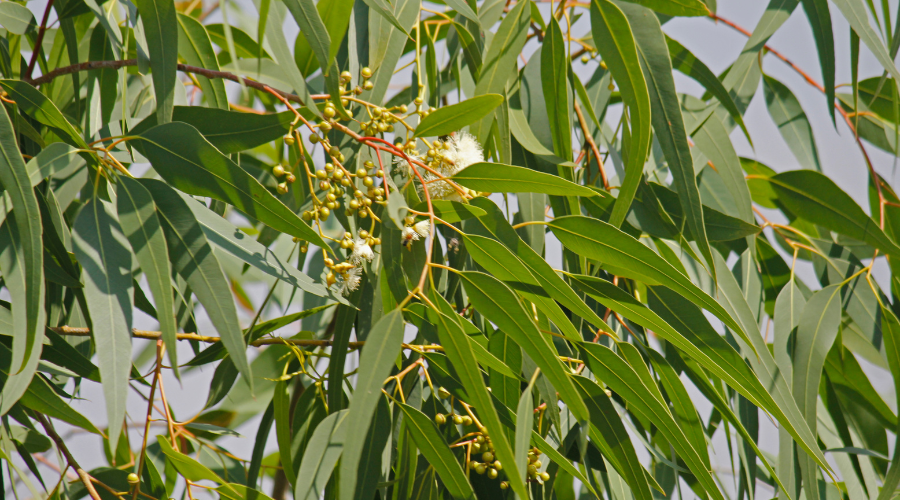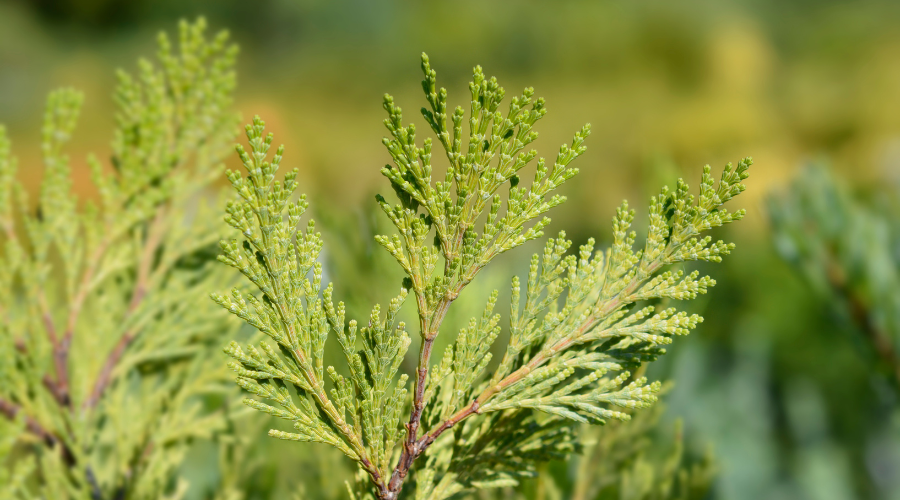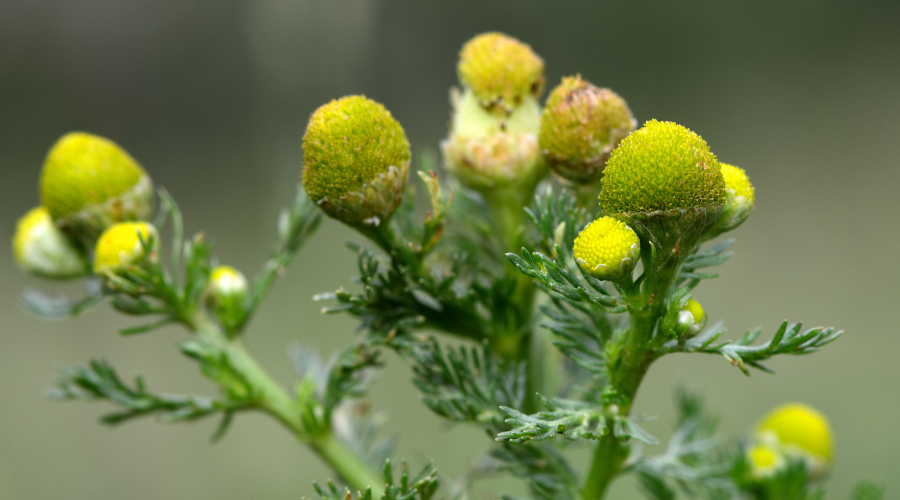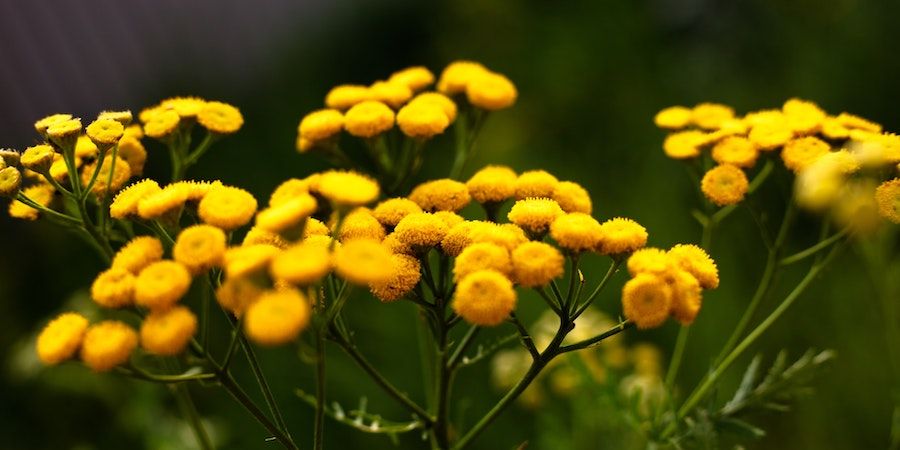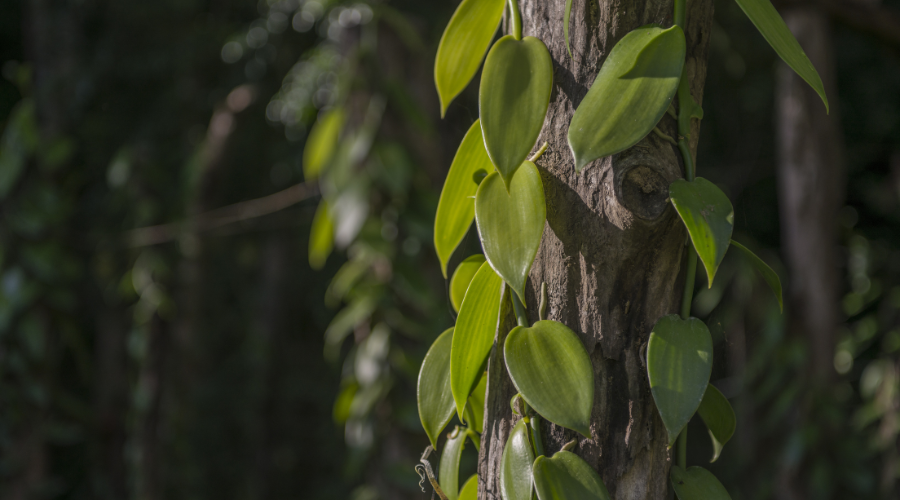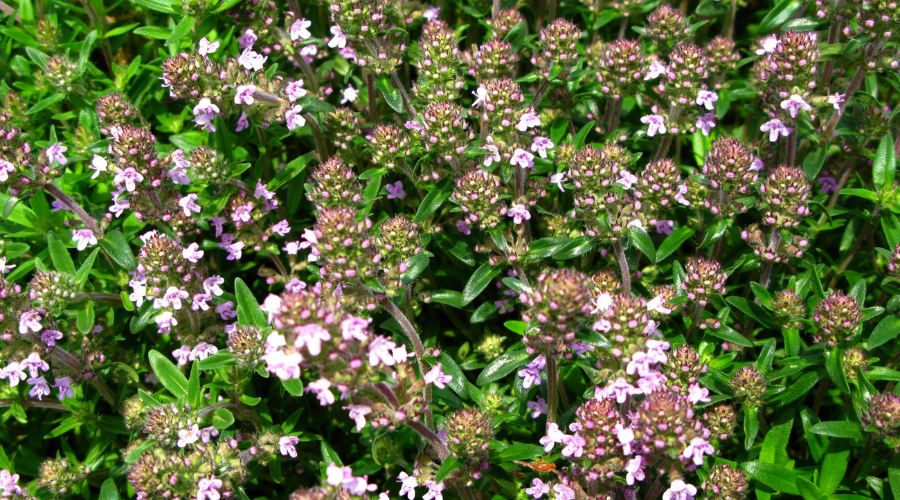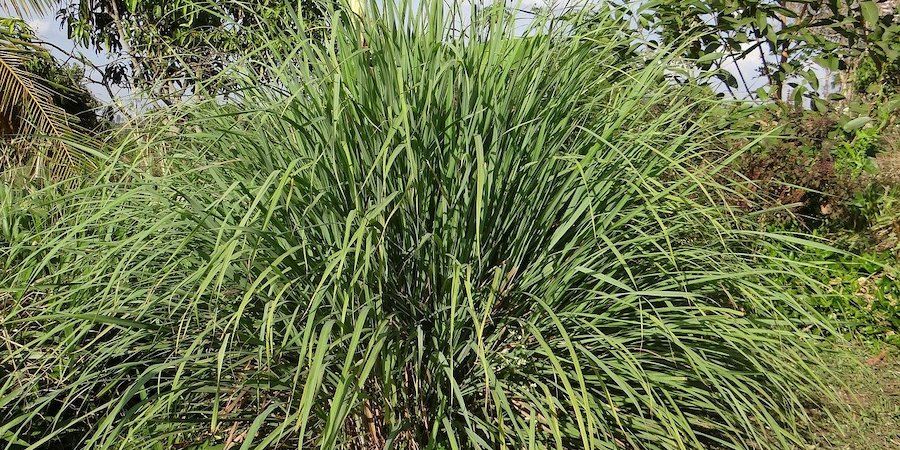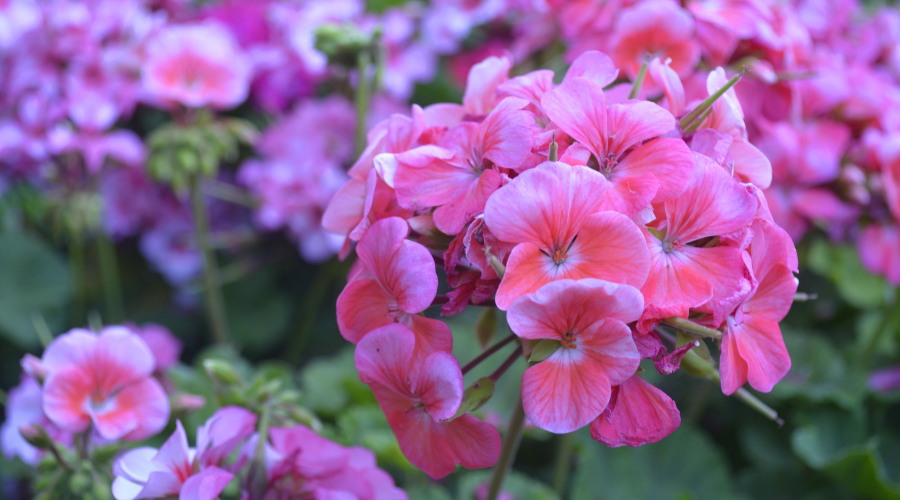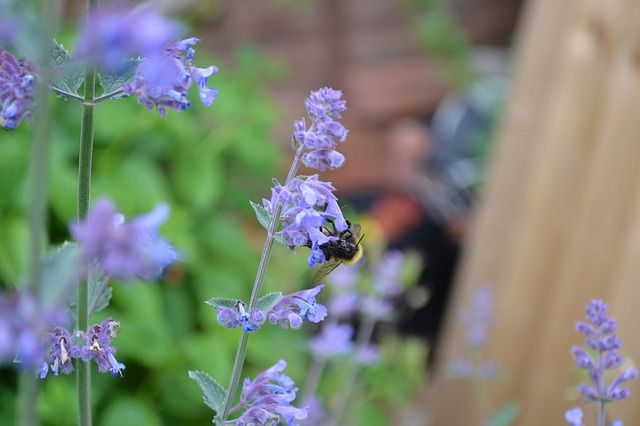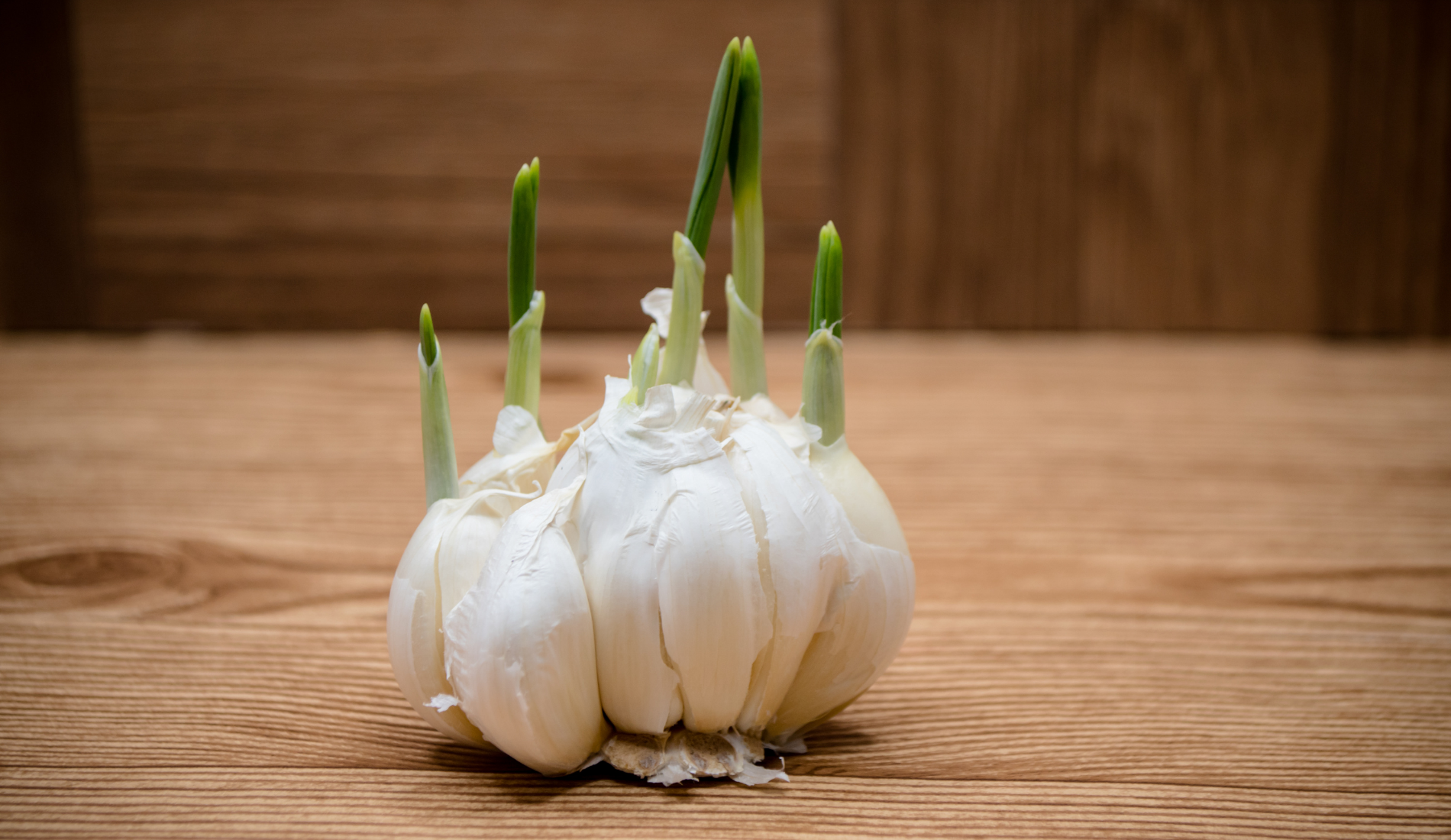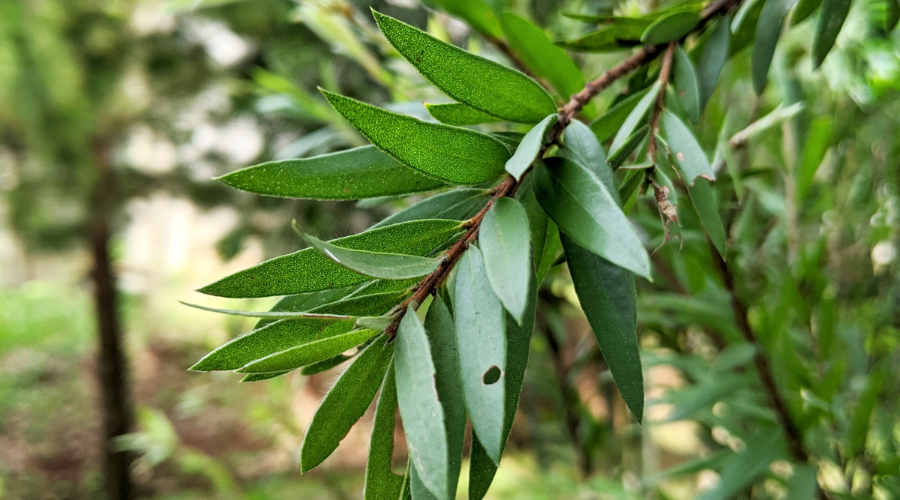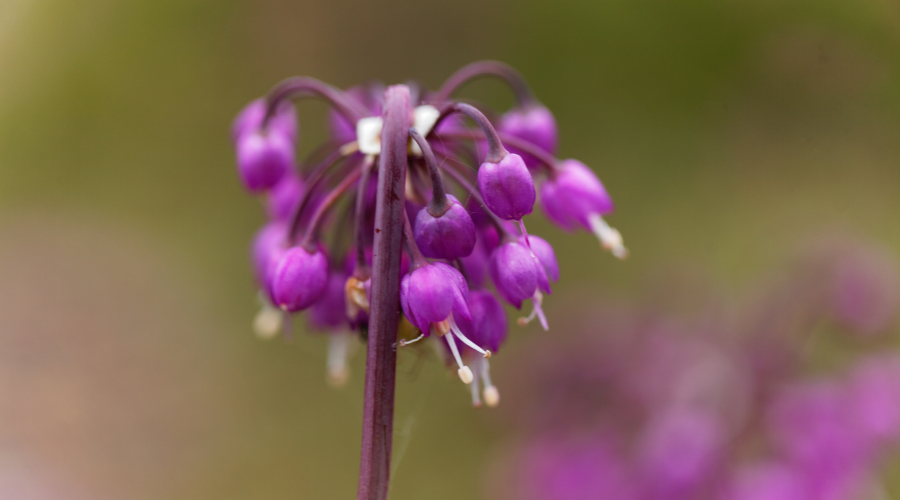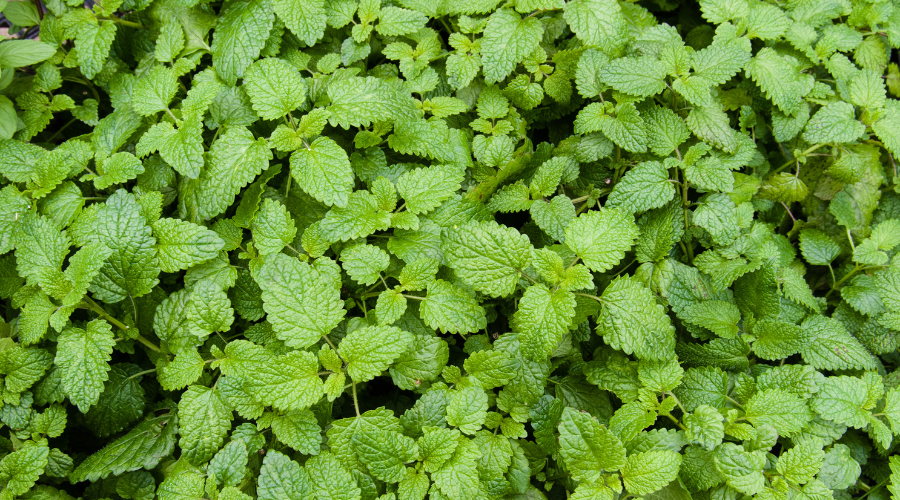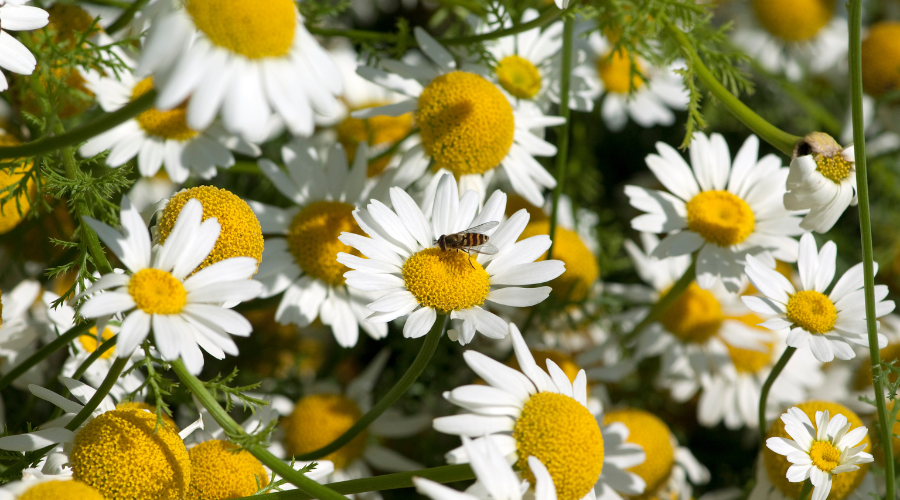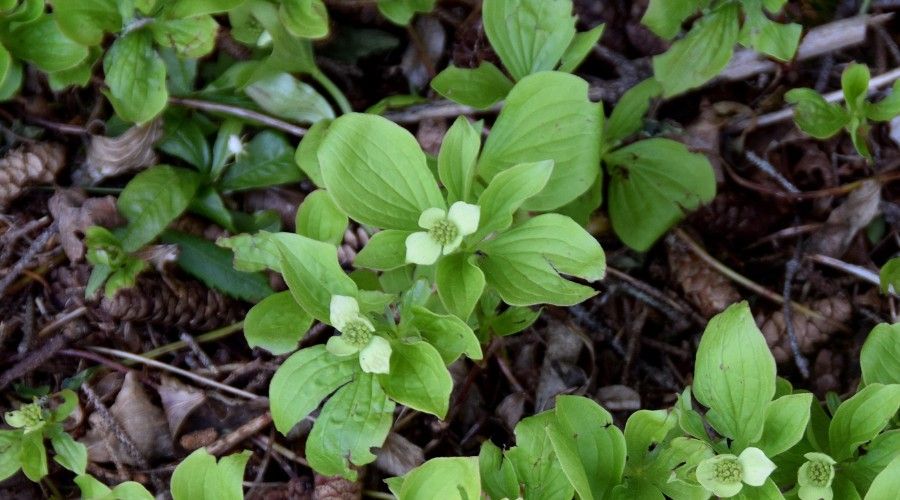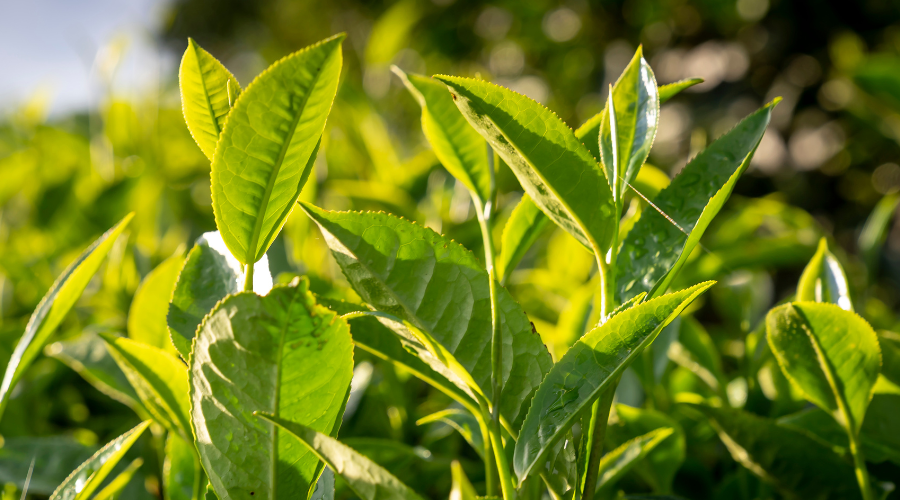The best you can do after a long day during these warm sunny months is to go to your backyard and enjoy yourself. However, it can be very complicated to have fun or relax outside while being surrounded by thousands of aggressive mosquitos.
If you are tired of using expensive and smelly insect repellents to get rid of them, there is another great solution. In this article, We have rounded up all the most effective mosquito-repelling plants you can grow, dry, extract or hang to keep your space free of skeeters!
Mosquito-Repellent Plants
Perennial plants that help repel mosquitoes seem too good to be true, but they aren’t! If planted with an eye toward placement in both garden beds and porch planters near your seating areas and paired with other natural repellants like citronella candles, you have a great start to keeping those pesky mosquitoes far away, the natural way.
CINNAMON BASIL
Image credits: Lynne317 via Canva
Containing cinnamate, the chemical that gives cinnamon its flavor, this variety of basil brings you the best of both worlds. Although regular basil is a mild mosquito repellant, this particular plant is worth having for its many uses. Used in a vegetable patch, it repels many insects and enhances the flavor of nearby fruits, especially tomatoes. It also helps keep bugs away from roses.
Whether planted nearby or freshly cut and placed strategically, it helps keep that pesky whine of awful winged bugs away from your yard space, will stop flies from landing on food, and tastes great in many beverages!
Technically an annual, this plant will reseed itself in warmer growing climates if allowed and come back year after year- but is incredibly easy to cultivate indoors as well and can be kept alive year-round if taken in before temps drop below 40 Degrees Fahrenheit.
CLOVES
Image credits: Rojo-C-Joseph via Canva
You’ll only be able to grow this mid-size tree in USDA zones 9-12, but depending on the cultivation, it may also be grown in large pots and moved indoors during inclement weather. The awesome news is, if you aren’t interested in growing the plant, clove buds and oil are easily found in stores and can be used to help with your mosquito problem, as well since it is the scent that repels the insects.
This Asian native tree is an evergreen and adds interest year-round as long as temps don’t drop below freezing (although it can survive occasional frosts) and thrives in humid environments. The first three to four years require consistent soil moisture for good root establishment and should begin to flower in about six years, although harvesting capacity can take up to fifteen years.
The cloves you buy in a store are the flower buds taken before bloom and dried. They have many uses due to their astringent properties, aromatics, and flavor, so it’s well worth the plant enthusiast taking on the challenge of growing their plant. Both dried buds, as well as living plants, exude the famous clove scent famous for its pest control properties.
LEMON BALM
Image credits: zrenate via Pixabay
Think about keeping this little beauty in a container, as once it’s established can take on a life of its own! Mine has its spot to go crazy, but is hedged in by cement slabs, so it doesn’t take over the herbs planted nearby. Popular due to its many health benefits and lemon scent, this is one plant that is useful in more than one way in your garden beds and well worth taking the time to cut back if it tends to proliferate.
Used fresh, dried, or pressed for oil, lemon balm will help repel mosquitoes no matter how you decide to use it. Plus, it’s a long list of added perks that are worth considering having around.
Used in the Western world as far back as the early middle-ages, you can use lemon balm as a natural sleep aid, stress-reducer, digestive aid, and a mild astringent on top of repelling insects. Considered non-toxic and non-irritant, many people enjoy the leaves of this plant in their teas, as well as a topical oil.
ROSEMARY
Image credits: webentwicklerin from Pixabay via Canva
Evergreen in most climates, this woody shrub call grow to heights of three to four feet and five feet wide, so be sure to plant rosemary in an area where it can have some space! It also does well in large planters and is a sun lover, so places it in a southern direction, so it can receive the light it craves. Hardy and tolerant of drier soils, this plant is popular due to its heady scent and flavorful aromatics it lends to cooking.
Rosemary does well through the winter, but in northern climes above zone six, you may want to bring plants indoors if winters are harsh and have consistent deep freezes, and your plant is unprotected.
Propagate new plants using growth from existing plants or seeds – although it’s much easier to grow them from fresh cuttings. Their scent keeps insects at bay, and having a fresh supply of rosemary to cook with and dry for the winter saves a lot of money since it’s a fairly costly herb to purchase.
LAVENDER
Image credits: pixel2013 from Pixabay via Canva
This garden favorite thrives in hot, sunny, dry climates once established and is a must for all full sun garden enthusiasts. Fragrant foliage and summer blooms repel many types of insects, and harvested blooms can be easily dried and placed in closets, drawers, and linen cupboards to help keep moths, spiders, and other pesky nuisances away. Plus, it makes your clothes smell great!
Depending on the variety and your planting zone, you may want to plant it directly in the ground. Lavender can grow into quite a large mound, so you should give ample space for each plant. Although they will begin to produce flowers in their first year, it takes at least three years to get established, and most plants will produce 1000 or more flower stems for you to harvest!
Tough to kill, be sure not to allow good drainage, and even mix in some rock to your soil to let roots get a good amount of oxygen.
BEE BALM
Image credits: BambiG via Canva
Also called Wild Bergamot, this attractive plant is tolerant of almost every soil type depending upon the variety. Late summer blooms not only repels mosquitoes, but they are also butterfly, hummingbird, and bee attractants.
Preferring a sunny to a partly shaded area, this plant can become somewhat invasive once established, so you should take care to separate the plant as it begins to die out on the inside. Cutting back during its dormancy help keep it within the boundaries you have set for it.
Attractive and bright blooms begin early through mid-summer in pink, purple, white, and red hues. Some varieties can grow up to four feet, so be sure to plant the type you prefer for your space, and then sit back and enjoy mosquito-free evenings!
MARIGOLDS
Image credits: kuarmungadd via Canva
The annual and perennial versions of this North American native repel mosquitoes and many other critters that are considered a nuisance to your yard and garden. The most popular strains of these bright flowers are annuals, but depending on your climate, are often self-sowing and will come back year after year with no effort on your part.
Because of their sunny yellow and orange blooms that continue spring through frost, these flowers have been a popular color choice for gardeners for many years- and have the added benefit of a strong fragrance that repels deer, rabbits, and practically every insect in existence. When planted as companion plants around your fruits and vegetables, you also have just created a natural insecticide barrier.
If you want to be sure to have these little beauties where you want them from one year to the next, collect the seed heads after the flowers are spent and start them indoors in a sunny spot before transplanting after your last frost or sow them directly into your garden.
PEPPERMINT
Image credits: Don_Heupel via Canva
This hardy rapid grower can quickly take over your garden through self-pollinating runners, so keep it contained! The effort is well worth it, however, as this fragrant plant does much more than keep mosquitoes away. Also popular to repel spiders, peppermint can be used in teas and cooking and has been used as a digestive aid for thousands of years.
Runners are easy to spot but quickly propagate, so be sure to dig them up or cut them before they take hold. If you aren’t interested in having them in pots, use simple garden edging or bricks to slow down the spread.
LEMON VERBENA
Image credits: Nahhan via Canva
This plant will have the best lemony smell of anything growing in your garden. Winter hardy only through zone eight, so you may want to keep this plant in a container and bring it in before your first frost to allow it to go dormant but not die out completely.
Leaves also have such a strong lemon flavor that it is often used to replace actual lemon in many recipes and drinks. Best started from cuttings, in tropical zones, these plants can grow to 14 feet or more but often stay much smaller in temperate zones where they need a cool, but not freezing, the dormant season before sending out new growth.
These lemon scents help repel mosquitoes, making this the perfect container plant for your outdoor sitting areas. If you are lucky enough to live in a tropical zone, plant these along with a fence or trellis as they grow to cover more area, and enjoy their lemony fragrance!
FEVERFEW
Image credits: paulfjs via Canva
These little, cheerful daisy-like flowers are a happy addition to any garden. Small and compact, it’s easy to find space to plant a few of these amongst your existing plants to add a bit of summer and fall color, as well as to help rid your garden of mosquitoes, which are repelled by their fragrance and presence of pyrethrum oils.
Used for centuries medicinally, feverfew is also a popular herb to relieve migraine symptoms. Although it can be ingested, usually as tea, consult a doctor before introducing it into your diet.
FLOSS FLOWER
Image credits: Nahhan via Canva
Depending on your growing zone, these little flowers may act like an annual but are self-sowing and will come back year after year in any zone if the seeds are allowed to drop. They also are incredibly hardy and frost tolerant in sunny locations, putting out blooms well into late fall and early winter in mild climates, making them an ideal container plant.
The long-lasting blooms typically come in blue and purple shades but have been cultivated to show pinks, reds, and whites. Plant in containers with other sun-lovers or amongst your perennial gardens for a splash of color later in the season.
Because of their strong fragrance, they repel mosquitoes and biting flies, but a note of caution, they also have spiny stems and leaves, which act as an irritant and can cause an allergic reaction in some people.
SNOWBUSH
Image credits: puhimec via Canva
A native to the western states, this evergreen shrub grows in the wild at 3500 feet and above and is easy to propagate in your garden given the proper conditions. Partial to rocky, well-drained soils, snowbrush does best in sunny locations and blooms beautiful white clusters of flowers spring through late summer.
Easily propagated from wild cuttings and treated seeds, snowbush can grow as a woody shrub, or you can train it to have a trailing effect. Flowers and foliage give off a sticky, sweet balsam aroma, which repels many biting insects and keeps deer and rabbits at bay.
Despite its growing preferences, this shrub is very tolerant of a variety of soil types. You can grow it almost anywhere, creating a beautiful backdrop to your yard edge or mixing in with other border shrubs.
PENNYROYAL
Image credits: born1945 via Creative Commons
A highly potent plant, the use of anything other than a decorative plant to help repel mosquitoes, ants, gnats, and fleas you should do with caution. However, fresh cuttings in pockets and hat brims are most effective in keeping nasty hitting bugs away.
Use it along walkways, house entrances and foundations, and near pet quarters. When pennyroyal is stepped on or brushed against, it sends fresh bursts of scent that staves off the worst of our annoying insects, as well as mice.
As an insect deterrent, these low-growing plants can be extremely helpful in the vegetable garden and ward off many types of beetles that will quickly decimate your crops. Plant under or around susceptible plants to keep them pest free, but be sure to transplant them into a container for the winter or rip them up to replant in the spring as they are in the mint family and can become invasive if not kept in check.
THYME
Image credits: photosforyou via Pexels
Used fresh in cuttings, dried, or oils, thyme contains a toxic aroma to many insects and is beneficial to use as a natural insecticide. These properties also make it a popular plant around roses and other blooming perennials that attract destructive bugs. Thyme is worth having within your garden beds to deter insects and reap the natural relaxing and detoxifying properties it also contains.
Growing thyme from seed is a slow, tedious process, so if you can purchase a plant for your garden, you are much better off when propagating this small, woody shrub. Proper cutting is important to keep shoots tender and harvestable for use, and you should cut plants back in early spring to influence new growth. After a few years, the plant may get too woody to use and may need to be replaced
PITCHER PLANT
Image credits: pelicankate via Canva
Often thought of as a tropical plant, you can find these North American natives growing from Canada to Texas. Blooms arrive in spring before sending colorful pitchers that last through the growing season. These pitchers send a sweet smell that attracts insects and lures them to death.
Wet feet in sandy soils, dry stems, and lots of sunlight are a must to be successful in growing these plants, but once established should be pretty much left alone to do their thing. They are self-fertilizing and should be left out of your fertilization schedule as well since this mistake is what often kills off a mature plant.
The pitcher plant doesn’t repel mosquitoes, but it digests the occasional mosquito, as well as many other bothersome insects- and is fun and colorful to have around for garden variety.
CADAGA TREE
Image credits: yands via Canva
Part of the eucalyptus family, the Cadaga tree is a native to Australia and does best when grown in zones 9-11. Tolerant to frosts, this particular tree can become invasive in the proper environment, so growing in a contained area is suggested as it can reach upwards of 40 feet.
As with other members of this plant family, the oils found in this vegetation are highly effective in their use against biting insects. When you place it in community areas, it will aid in keeping an area clear of mosquitoes. It also is a very interesting plant to look at, putting forth soft red leaves in the summer as new growth, and has a peeling bark that increases in interest as the tree ages.
INCENSE CEDAR
Image credits: Nahhan via Canva
Not to be confused with a true cedar native to parts of Asia, incense cedar is a western North American native evergreen that can grow to 100 feet. These are popular trees to plant for shade and windbreaks and are easy to keep trimmed and shaped, as well for decorative use.
Slow growing, trees only put on approximately 6 inches a growth for their first ten years until root systems are established, but can grow to five feet in width quickly- hence its popularity as a privacy screen when planted together. Added benefits come from its spicy fragrance, long popular with woodworkers for its natural insect repellent and decay resistance. When planted as a hedge or yard border, you have extra protection against wood-boring insects and many biting insects.
LEMONGRASS
Image credits: Nanniie_iiuu via Canva
A tropical plant, lemongrass does best when grown indoors or transplanted outdoors after the last frost. Considered mature at four to eight months, the plant can be harvested every three to four months by cutting the stalks and using fresh and dried teas. New plants are easy to grow by removing new stalks and putting them in water until new roots form.
Because of its high level of citral, the oils used to repel insects, both the fresh plant and the oils, are effective in using as a natural insect repellent. Another perk to this plant is it's used for flavoring rice, stir-fries, soups, and smoothies. And since it grows well indoors, you can have a fresh, green element year-round in your kitchen!
Mosquito-Repelling Plants to Dry and Hang
Whereas some plants repel unwanted pests naturally, others need to be harvested and dried to get the most out of them. Drying herbs and grasses is a simple process and doesn’t require anything but a pair of scissors, a little bit of string, a paper bag, and someplace to hang your plants. You can also dry your herbs on a screen, in a dehydrator, in the oven, or in the microwave. However, most herbs and grasses have very little moisture, so hanging them is the best way to ensure their color and oils aren’t lost through the drying process.
For best results, be sure to harvest in the morning after the dew has dried, but before the sun burns off any newly formed essential oils. The following is a list of plants best used when dried to help repel those annoying mosquitoes.
PINEAPPLE WEED
Image credits: Ian_Redding via Canva
Also called wild chamomile, this low-growing wild plant is native throughout the world and has been used medicinally as a preservative and repellent for countless years. You can mostly find it in arid southwestern areas in compacted soil and away from the perennial competition. You can cultivate it from its petal-less flowerheads and plant it where you can get at them easily for harvest.
Good to seep into teas fresh, once dried, the pineapple weed can be crushed and rubbed into your clothing or hung in areas likely to draw insects to help repel them.
SWEET FERN
Image credits: gyro via Canva
Another native plant, the sweet fern, is found along with the eastern coastal states, north into Canada, and the Mid-west. It is a small shrub that can reach five feet in height and spreads underground through its root system in poor soils, making it a popular contender for commercial nursery sales.
The leaves have a sweet smell and have been used in teas and for stomach troubles. Simply bundle tightly with thread after drying and place on a non-flammable surface. Once lit, it should burn slowly, releasing a fragrant and steady stream of smoke.
TANSY
Image credits: Ekaterina Grosheva via Unsplash
Although tansy is a pretty and easy-to-grow plant, it can be toxic when consumed in large quantities. If you are growing tansy, keep it in a contained area as it spreads rapidly through its roots. Although you can use fresh leaves for this recipe, dried leaves create a more potent spray since the oils will be more concentrated.
The concoction is easy enough and requires steeping the plant in hot water before cooling, straining, and placing it in a spray bottle. When using to spray in plants, use a little oil soap, so it adheres to the plant. When using on yourself, spray your skin and clothes with your DIY spray the same way you would with any insect repellent. It smells so much better!
VANILLA LEAF
Image credits: RBJpix via Canva
The vanilla leaf is very particular about its growing habitats and is a native plant along the northwestern Pacific coast in moist soils in shady areas. Once established, they can tolerate drought conditions, but cultivating them in a garden hasn’t been met with much success.
Luckily, you can find these plants in abundance and harvested spring through fall in their native setting. Popular in tea due to its vanilla aroma, when dried in a dehydrator will fill your house with the heady scent of vanilla and repel insects. You can rub the fresh leaves on your skin to help as a natural insecticide. When dried and bundled, it serves as an effective smudge stick, similar to sweet fern.
WORMWOOD
Image credits: Carmen Hauser via Canva
Known worldwide as absinthe, this plant has a historical significance in medicine dating back over 3000 years. Traditionally used for stomach ailments, once dried and stored properly. It is used in small, controlled amounts for a variety of discomforts.
Wormwood is easy to grow and is a beneficial plant to have in your garden. The leaves contain resinous particles, which you can use as a natural insecticide. When dried, bundles of the herb can be placed in doorways, closets, or even worn on hat brims or in pockets to help ward off the whine of mosquitoes.
Despite its many uses, only external applications are without caution. If using this plant in any way or another way, consult an herbalist and doctor to avoid any side effects.
Mosquito-Repellent Plant Oils for Skin or Sprays
Even though all of the plants listed in this article are effective in helping keep mosquitoes away, when extracted for oils, they become much more potent. The plants listed below need a release of oils to work in repelling mosquitoes. As with drying techniques, be sure to harvest your plants at the optimum time to get the most oil out of your plants.
Primitive oil extraction is not as difficult as it sounds, and you can complete the process with little fuss. Please note that by using the linked methods, you will not be getting 100% pure oils, and they should not be ingested. However, they are perfect for homemade insect sprays and topical applications.
LEMON THYME
Image credits: fotolinchen via Canva
Lemon thyme has a light citrus flavor and sometimes benefits from being grown indoors in a container despite being hardy to zone five. Useful in many recipes, lemon thyme is popular for its subtle flavors with chicken and pork, and you should harvest it regularly to encourage new growth.
Alone, lemon thyme is not a good insect repellent, and the oils of the plant can be rubbed onto your skin after picking and bruising the leaves in your hands to release the insecticidal properties. On its own, this is a quick relief, but to make it more effective, extract the oils and mix them with others into a spray. Eucalyptus and Catnip are two choices that have shown to be effective with lemon thyme and added into a coconut or soybean oil base, extending the life of the repellent.
CITRONELLA
Image credits: sarangib via Pixabay
Citronella plants are native to Southern Asia and are commonly grown in frost-free zones within the United States as ornamentals. Once mistaken to create mosquito-free zones wherever planted, studies eventually proved only the oils from the plant, not the actual plant itself, proved effective in warding off biting insects.
A large grass can also be planted in a container and brought in when no fear of frost is present. Since it is an ornamental plant, its aesthetic properties only compliment the mosquito warding efficiency it holds within its leaves.
Breaking off a frond and rubbing it on your skin can give you a few hours of relief. If you are looking for something stronger, extracting the oils and mixing it with vanillin (extract from the vanilla bean) provides long-term relief comparable to deet. Furthermore, the oil also has antibacterial and antifungal properties, making this a worthwhile plant to have around!
LEMON-SCENTED GERANIUM
Image credits: olgatroy1 via Canva
A joy to grow, these scented varieties are also popular to dry for potpourris, seeped in bath water, or even in baking, jams, and jellies! There are many species of scented geraniums. However, the Citronella variety quickly became the most popular during the 1980s due to a horticulturalist’s claims to have engineered a mosquito-repelling geranium through genetic modification of a rose-scented geranium and citronella grass.
Citronella scented plant, when crushed and rubbed on your skin, not only smells great but does aid somewhat in helping to repel mosquitoes. All lemon-scented geraniums contain a small percentage of citronella oils, and all are mildly effective in staving off insect bites for a few hours when rubbed on the skin.
CATMINT
Image credits:PollyDot via Pixabay
Catmint has a mildly sedative effect on people and has been used medicinally for cold and flu remedies. Steeped into a tea, it also aids in digestion and relieves bronchial problems. Furthermore, extracted oils have proven ten times more effective at repelling mosquitoes than DEET.
These easy-to-grow, drought-tolerant, heat-tolerant, and long-blooming perennials come in a variety of heights and colors. They have showy silvery, green foliage. Once they have bloomed, if they are cut back ⅓ of the stems, you will encourage another flush of blooms later in the summer. Beware though, they aren’t called catmint for nothing! Not quite as enticing as catnip, young plants should be covered with a wire dome as felines will roll in it!
Perfect to grow in tandem with roses, it covers bare rose stems perfectly without the finickiness of many other types of companion plantings. Overall this is a must-have plant for your garden for a variety of winning reasons.
GARLIC
Image credits: AHPhotoswpg via Canva
Like most bulbs, garlic needs to be planted in the fall after the first frost to ensure a healthy crop the following summer. Be sure to harvest, cure, and dry correctly to ensure long storage life, leaving its papery covering on to keep rots and sprouting away.
Garlic is considered one of the world’s most healthy foods, contains high amounts of essential vitamins, aids in heart health, has anti-inflammatory properties, and lowers blood pressure, to name a few. If these aren’t enough reasons to have them as a staple in your garden, then consider that squeezing and rubbing the juice on your skin will also keep mosquitoes (and possibly everything else) far away for the better part of an hour.
EUCALYPTUS
Image credits: Fitri Saraswati via Canva
This Australian native is closely related to the earlier mentioned cadaga tree but can grow more than twice as large in a tropical environment, occasionally reaching 130 feet in height. Because of this, a variety of species do better in pots and are fairly easy to care for.
Famous for their silver-dollar foliage and heady scent, eucalyptus trees conjure up images of the Australian outback, fuzzy koala bears, and kangaroos, but this tree is much more beneficial than a series of happy media images.
As effective as DEET, or even more so, eucalyptus oil should be applied consistently to maintain protection. If you get a bit using this oil, it doubles as an antibacterial agent and will help keep swelling to a minimum.
MINT
Image credits: ChrisCCP via Canva
Many plants are part of the mint family, and gardeners have a wide choice for their flower beds. All mints are aromatic fresh or dried, but the extraction of their oil really brings about their true properties and potency.
Mint oils are effective repellents to insects around the house and as a natural insecticide and mosquito spray. Simply mixing oils with a carrier oil (such as grapeseed oil) and water and spraying around the house will repel many insects. Rubbed into your skin, it is also very effective in keeping off mosquitoes.
NODDING ONION
Image credits: weisschr via Canva
A few discrepancies exist concerning the native habitat of this particular plant, which has shown up historically throughout Canada, through the Great Lakes region, and well into the northern regions of the Southern states. Most likely cultivated by early settlers, it can now be found throughout the Western states as well.
Although it has similar properties to garlic, this wild onion isn’t often gathered for cooking anymore due to its strong flavors. When pressed for juice and oils, this plant can be effective in repelling mosquitoes when rubbed on the skin.
CATNIP
Image credits: jatrax via Canva
Almost identical chemically to catmint, catnip isn’t of the same ornamental value as catmint due to hybridization but does attract cats much more readily. Catnip repels termites and cockroaches, two other nuisances not welcome in any home, and these boundaries of plants helped to keep a tidy home.
Like catmint, the extracted oil is incredibly effective as a mosquito deterrent.
PYRETHRUM
Image credits: emer1940 via Canva
Also known as a hybridized painted daisy, this non-native perennial looks like a harmless flower but hides an important secret. These flowers are grown and harvested for their toxic properties used in mosquito control and as a repellent to other pests like aphids and ants.
Using this topically is a no-no as toxicology reports have shown data that there may be negative human effects through skin contact, so the handling of extracted pyrethrum should be done with care, and should not be used on the skin. Instead, a misting spray used once or twice a day has proven to be effective in managing lingering mosquitoes in your yard.
Home production is as simple as soaking the flowerheads in warm water for a few hours to create a spray toxic to all insects it comes in contact with, including beneficial pollinators. Sprayed around windows and doors can help in keeping mosquitos away, but be sure not to inhale the mist as you spray.
STONE ROOT
Image credits: SkyF via Canva
Another member of the mint family, this tall, straight-stemmed plant bears a pale yellow flower and a strong scent of lemon, giving it the nickname richweed. As with most of the mint family, the stone root plant has many health benefits and was used to heal wounds, aid digestion, and as a mild antiseptic by early settlers.
Found natively within the eastern states, stone root can be cultivated within the garden as long as it has a moist, acidic environment. Due to its mint properties, stone root oil can be extracted from leaves and used as a spray to repel mosquitoes. Like the rest of its family, it doesn’t have any warnings concerning topical applications, and leaves and oils can be rubbed into the skin.
TEA TREE
Image credits: Quang Nguyen Vinh via Canva
Tea trees are easy to cultivate in a container and are favorites of greenhouse enthusiasts. Easy to grow and prune, you can cut back this fast-growing tree to keep small or let loose to grow as large as you will allow. The only major catch is to allow this tree to have a lot of water and not be allowed to dry out.
You can skim off the oils to take advantage of their antiseptic, antifungal, antiviral, and antibacterial properties in household cleaning solutions and topical ointments. Tea Tree oil is especially useful as a natural bug spray. If you get bit, apply the oil directly to the mosquito bites for immediate relief.
Mosquitoes Be Gone
As you can see, you don't need to use expensive insect repellents or make a campfire, so its smoke scares mosquitos away every time you want to spend some time outside. With these 35 plants, you can enjoy your freedom while hanging out in your backyard. Just make sure you plant the species suitable for your zone and that they will match the unique style of your garden.
Let us know which plant you find the most useful, and as always, please share!

